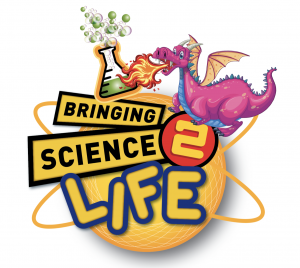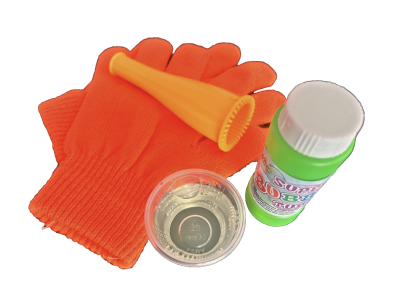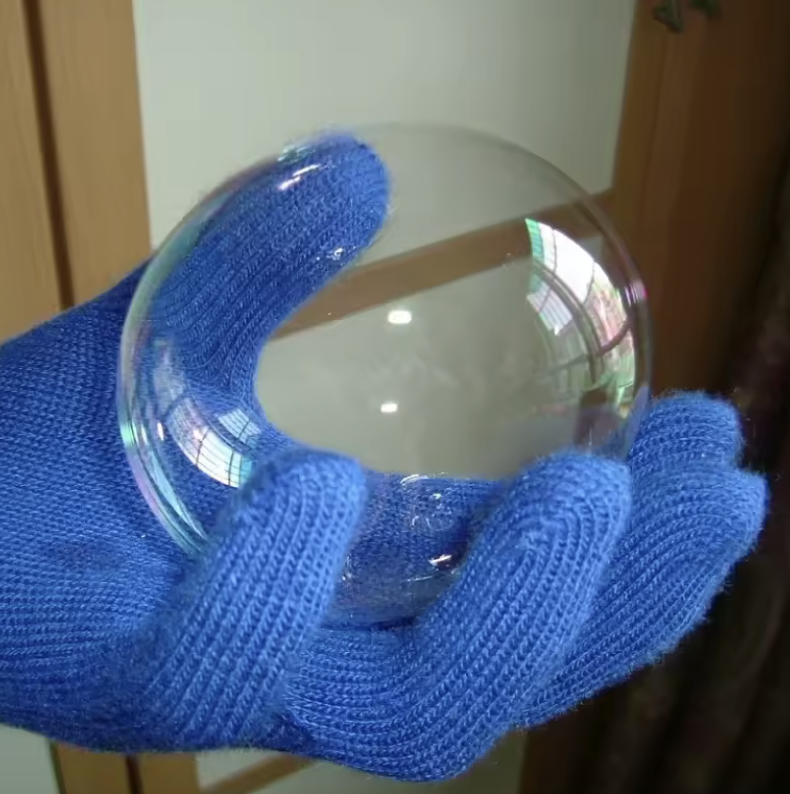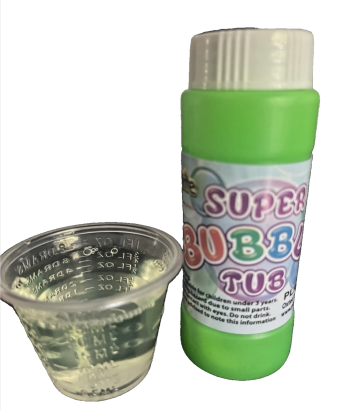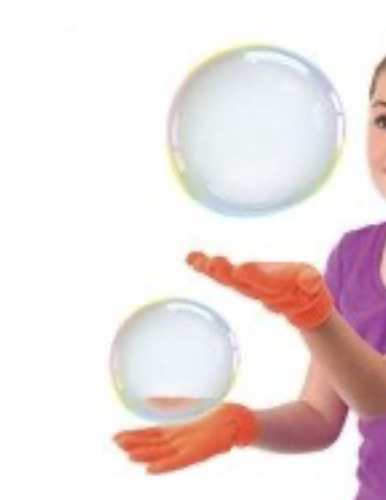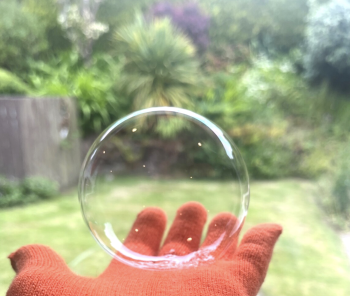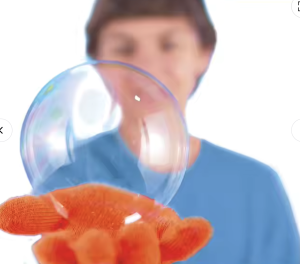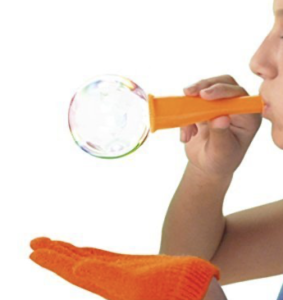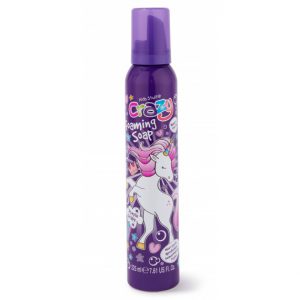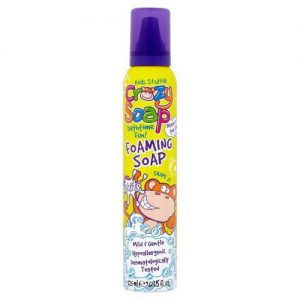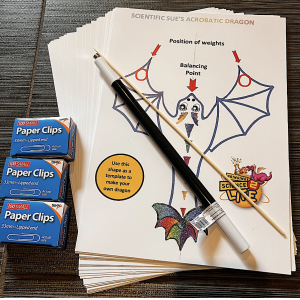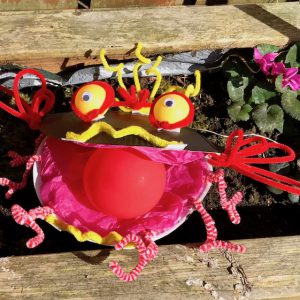Description
🫧 Super Bouncing Bubble Kit – A Magical Science iT! Activity from Science2Life
Special Appearance: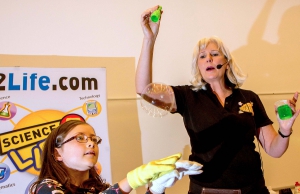
Lucy Carrol, age 7, helps out at Scientific Sue’s dazzling Science of Bubbles show during Science Week Ireland at the Institute of Technology, Sligo.
(Photo by James Connolly, 12NOV17)
Make Science Bounce—Literally!
Discover the awe and wonder of hands-on science with our Super Bouncing Bubble Kit. Specially designed for young scientists and bubble lovers, this STEM-inspired kit turns everyday play into an exciting scientific adventure.
🔬 What’s Inside the Kit?
Everything you need to start your bouncing bubble experiments right away:
-
50ml Super Bouncing Bubble Solution
-
2 Magic Gloves (so you can catch and bounce bubbles)
-
1 Bubble Blower
-
1 30ml Mixing Cup
-
Step-by-step Instructions
🧪 How to Make Bouncing Bubbles:
-
Open the bubble solution and carefully remove the seal.
-
Pour the bubble solution into the small plastic cup.
-
Slip on your magic glove.
-
Dip the wide end of the bubble blower into the solution.
-
Gently blow a large, tennis-ball-sized bubble – with the blower pointing downwards.
- Raise your hand.
-
Flick the bubble into the air and catch it with your gloved hand.
-
Can you make it bounce? Try again and again!
-
Now bounce it from hand to hand – You are officially a Bubble Juggler!
👩🔬 Let’s Investigate:
Encourage scientific thinking with these bubble-based challenges:
-
How many times can your bubble bounce before it pops?
-
Does bubble size affect bounceability?
-
What happens if you blow harder or softer?
-
Can you bounce a bubble on wool, cotton, or rubber gloves?
-
Which surface works best for bouncing?
Perfect for solo play or family fun, this activity builds skills in observation, prediction, and experimentation—all while having a blast!
🎁 Perfect For:
-
STEM experiments at home or in the classroom
-
Birthday party activities
-
Christmas stocking fillers
-
Science fairs and festival workshops
-
Curious minds aged 5+
🔍 Educational Benefits:
Science2Life’s Science iT! Activities are developed by real educators to promote:
-
Early engagement with science and engineering concepts
-
Critical thinking, creativity, and logic through play
-
Lifelong curiosity and a love for learning
These STEAM activities transform toys, tools, and household items into powerful learning opportunities—making science accessible, fun, and unforgettable!
🧼 Safety First!
Recommended: Young children should wear safety goggles when playing with bubble solution to prevent soap splashes in their eyes.
If a bubble bursts in the eye:
-
Rinse immediately with lukewarm water using a clean jug or shower stream.
-
Young children may be wrapped in a towel for comfort during rinsing.
⚠️ Warning: Bubble solution may cause slippery surfaces. Clean up spills right away to prevent accidents.
🎓 Linked to the Curriculum
All Science2Life kits are aligned with key STEAM learning goals and are perfect for:
-
Supporting school topics like forces, surface tension, and states of matter
-
Introducing key scientific practices such as hypothesis testing and recording results
-
Being scaled up for classroom workshops, festivals, or science birthday parties
🔬 Explore More Science iT! Activities:
Science2Life offers a full range of hands-on kits including:
-
The Magical EVANESCO Spell
-
The Magical AMORTENTIA Spell
-
Make Your Own Fossil Kit
-
Colour-Changing Bracelet Kit
-
Pneumatic Monsters
-
Creative Circuits
-
The Magical Wandarama
-
Gone Fishing
-
The Jitter Bug
Each one can be scaled up into a workshop programme. Want to know more? Get in touch!
📧 Email: ScientificSue@science2life.com
📞 Call or WhatsApp: +44 7970 884728
🌐 Visit our website
🧙♀️ Join Scientific Sue on a Bubble-Filled Adventure!
Using a tub of bubbly magic, a bubble blower, and special gloves, Scientific Sue brings the science of bubbles to life! This amazing kit delivers fun, learning, and laughter—perfect for budding scientists and bubble chasers alike.
🧪 Curriculum Links: Super Bouncing Bubble Kit
Suitable for: Key Stage 1 & 2 (England, Northern Ireland) / Primary Levels (Republic of Ireland)
Curricular Areas: Science | Mathematics | The Arts | Literacy | STEM
🔬 SCIENCE
England: Primary Science (KS1 & KS2)
-
Working Scientifically
-
Asking simple questions and recognising they can be answered in different ways
-
Observing closely, using simple equipment
-
Performing simple tests and using results to draw conclusions
-
-
Everyday Materials / States of Matter
-
Identifying and comparing the suitability of materials
-
Observing materials change (liquid film stretching, popping)
-
Exploring bubbles as a gas trapped in a liquid
-
-
Forces and Magnets (KS2)
-
Understanding how pushes and pulls affect motion
-
Investigating how forces act on objects (bubbles bouncing and falling)
-
Northern Ireland: The World Around Us (KS1 & KS2)
-
Interdependence / Movement and Energy / Materials
-
Exploring how materials behave in different conditions
-
Investigating forces in action (bouncing, gravity, motion)
-
Developing skills in observing, predicting, and recording
-
Republic of Ireland: SESE – Science
-
Energy and Forces
-
Exploring the effects of different forces on objects
-
Recognising how air (a gas) can exert a force
-
-
Materials
-
Investigating how different materials interact (bubble vs glove surface)
-
Exploring the properties of liquids and gases
-
-
Working Scientifically
-
Questioning, observing, predicting, investigating, recording and evaluating
-
📏 MATHEMATICS
England/Northern Ireland: Mathematics (KS1 & KS2)
-
Measurement
-
Using standard units to measure liquid volumes
-
Comparing and ordering measurements (e.g. bubble sizes)
-
-
Statistics
-
Collecting and recording results
-
Creating simple tables or charts of bounce counts
-
Republic of Ireland: Mathematics
-
Measure
-
Estimating, measuring, and comparing capacities
-
-
Data
-
Recording data using tables or graphs
-
Interpreting results from bubble experiments
-
🎨 THE ARTS
England/Northern Ireland/ROI
-
Visual Arts / Design & Technology / Expressive Arts
-
Appreciating the aesthetic qualities of bubbles
-
Encouraging creativity in test design and decoration of equipment
-
Using colour and texture in glove choice or themed experiments
-
🗣️ LANGUAGE & LITERACY
-
Oral Language & Communication
-
Encouraging students to describe what they see and explain their ideas
-
Developing scientific vocabulary (e.g. surface tension, predict, solution)
-
Sharing findings through presentations or discussions
-
-
Reading and Writing
-
Following written instructions
-
Writing up results, predictions, and observations
-
🚀 STEM / STEAM Outcomes
-
Hands-on inquiry that supports scientific thinking and problem-solving
-
Cross-curricular learning with real-world application of science concepts
-
Encourages creativity, curiosity, and exploration through open-ended investigation
-
Provides a platform for collaborative learning and communication
